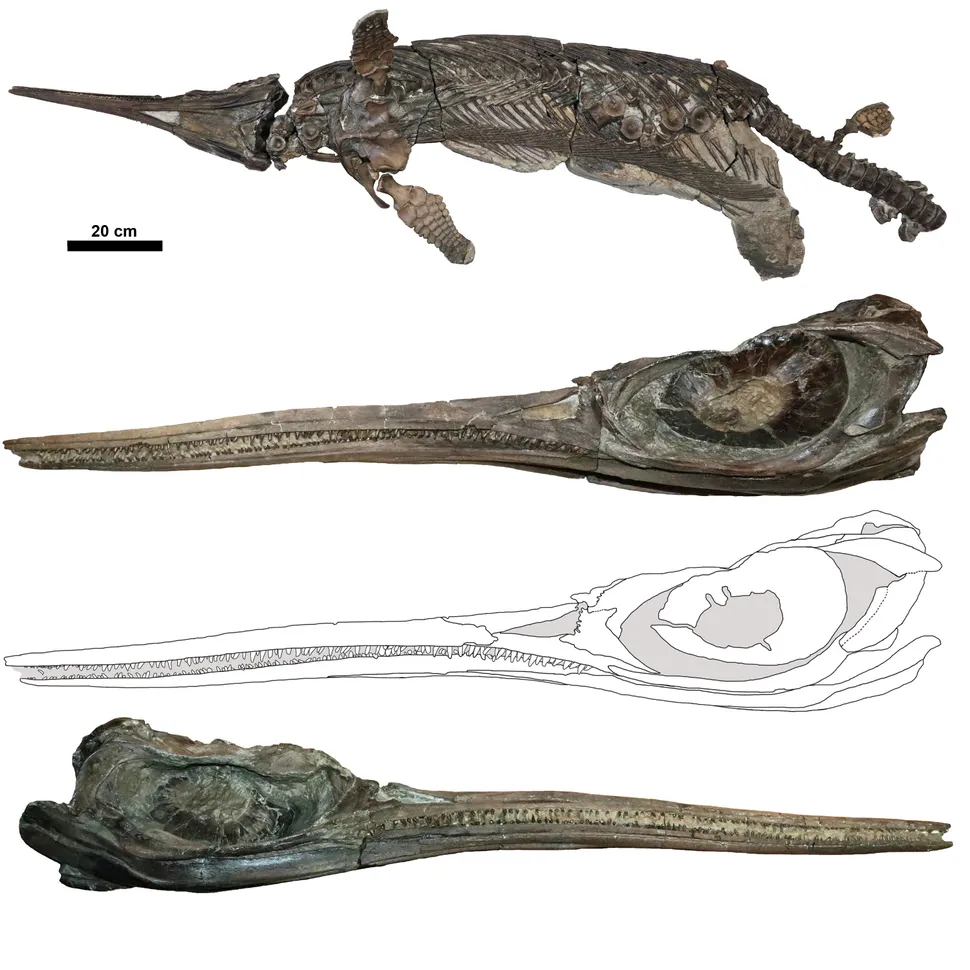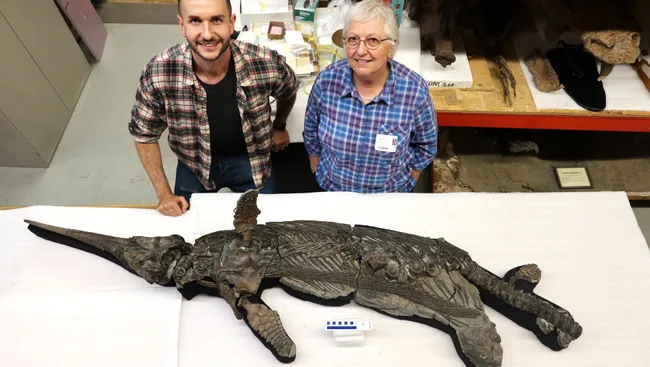The newly discovered ichthyosaur dubbed Xiphodracon goldencapsis was about 10 feet long and had a sword-shaped snout.
A remarkably preserved fossil unearthed on England’s iconic Jurassic Coast has revealed a brand-new species of ancient marine reptile that once swam the oceans alongside dinosaurs.
Named Xiphodracon goldencapsis, this early Jurassic ichthyosaur — or “sea dragon” — stretched around 10 feet (3 meters) long and sported enormous eyes and a narrow, swordlike snout. The species’ discovery, published October 10 in Papers in Palaeontology, sheds light on a critical evolutionary period more than 190 million years ago.
The fossil was first uncovered in 2001 by collector Chris Moore near Golden Cap, Dorset — the highest point on England’s south coast and part of the UNESCO World Heritage–listed Jurassic Coast. The specimen was later acquired by the Royal Ontario Museum (ROM) in Canada but remained largely unstudied until recently.

“I remember seeing the skeleton for the first time in 2016,” said Dean Lomax, paleontologist at the University of Manchester and the University of Bristol. “I knew it was unusual, but I didn’t realize it would help fill such an important gap in ichthyosaur evolution.”
The name Xiphodracon blends the Greek words for “sword” (xiphos) and “dragon” (drakon), while goldencapsis honors the site of discovery, Golden Cap.
Detailed analysis revealed that this individual’s bones and teeth bore signs of severe injury or disease, and its skull showed bite marks from a larger predator — most likely another ichthyosaur. “Life in the Mesozoic oceans was dangerous,” said Erin Maxwell, co-author and curator of fossil aquatic vertebrates at the State Museum of Natural History Stuttgart.
The fossil also helps pinpoint a major species turnover that occurred during the Pliensbachian Age (193–184 million years ago), when earlier ichthyosaurs were replaced by newer forms. The discovery suggests that this evolutionary shift began earlier than previously thought.
For now, the beautifully preserved “sword dragon” — both predator and prey of its time — will go on display at the Royal Ontario Museum, offering the public a rare glimpse into a vanished ocean world.
